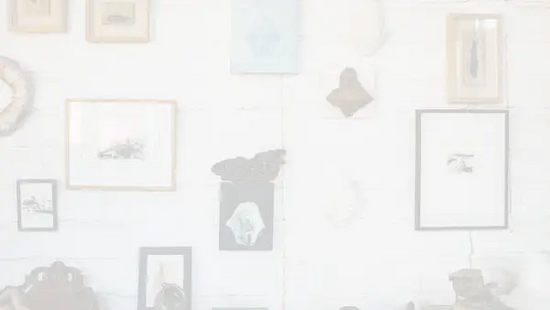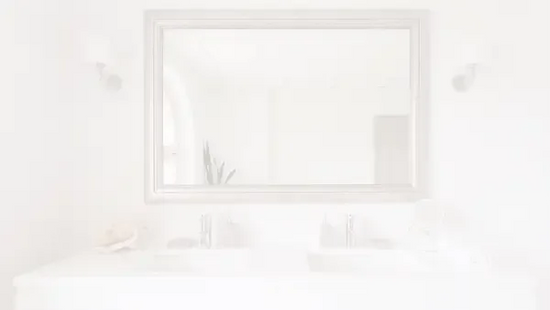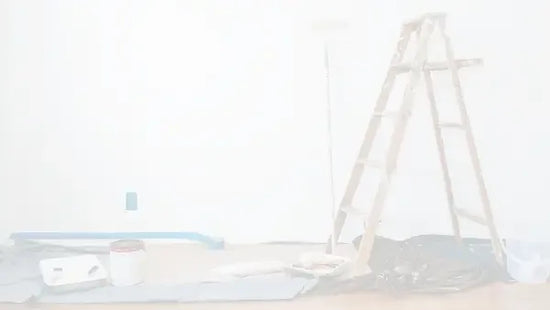Preserving the pristine condition of your walls while decorating them with photos and artwork can be a delicate balancing act. Picture-hanging-related damage, such as unsightly holes and scuff marks, are a common concern for homeowners and renters alike.
Fortunately, there are a few tricks to safeguarding your walls without compromising your ability to showcase your favorite pieces. In this guide, we’ll discuss ten tried-and-true ways to prevent and repair wall damage.

Before everything else, get the proper hardware.
It’s important to know that you can prevent most picture-hanging-related damages on both your wall and frames by knowing which hardware is best for your project. For example, consider your frame's shape (how wide) and weight (how heavy). This will narrow down your choices for which hanging system is the most appropriate.
If you get the hardware right the first time, this effectively lessens any chances of you needing to replace the hardware and inflicting more damage on your wall.
Use a stud finder.
Gallerists and interior designers alike will tell you that one of the most crucial steps in picture hanging is the preparation that comes beforehand. Getting the right arrangement, placement, and the like, depends on other factors, such as avoiding the wiring and locating a stud in the wall as a secure anchor point for even weight distribution. This helps lessen the stress caused by heavy frames on walls.
A stud finder will help you find the perfect spot to drive a nail or screw into and still maintain the integrity of the wall. In contrast, hanging art directly on drywall without hitting a stud and without using the proper hardware could possibly cause your art to fall and cause much damage to your wall.
Don’t ignore wall anchors.
Even with the proper hardware, you can still find opportunities to mitigate eventual damage. Wall anchors provide drywall support by distributing the frame weight across a larger area of the wall. This is crucial for heavier frames and mirrors, which need a stable base within drywall. They’re also straightforward to install. They typically require drilling a pilot hole first, after which the anchor can be inserted and expanded.

For more in-depth information on drywall anchors, check out this article: A Beginner’s Guide to Using Wall Anchors.
Consider getting bumpers.
Having been in the picture-hanging business for a while, we’ve learned to appreciate the small things that make a difference. Bumpers may not seem important, but when you start noticing scuff marks on the wall, chipped wall paint, and surface tension on your frames, they’re exactly what you need.

Rubber bumpers help minimize scuff marks by acting as the protective barrier between the frame and the wall. In areas where the frame is likely to move around, bumpers also reduce surface impact and act as a cushion to prevent annoying sounds. By adding an extra space, bumpers also allow air circulation between both surfaces and help prevent molds and unsightly signs of moisture caused by wall water damage.
Minimize adjustments with our Adjustable J-Hook kit.
Innovations in the picture-hanging industry have given us options beyond the hook and the nail. Some have nifty features that offer more flexibility. Our Adjustable J-Hook Kit, for example, allows height or level adjustments on the picture frame even after you’ve installed the hardware on the wall. This saves you from having to remove and readjust the frame over and over, especially if you’re eyeballing the placements.

Protect the frame with Wall Buddies.
Speaking of getting the proper hardware, it also helps to invest in additional protective tools. And when we say “invest,” we’re using it loosely… because our Wall Buddies don’t cost much!

If you’re nervous about hanging heavy art, Wall Buddies help remove some of the stress from the frame rails and corner joints and strengthen the upper corners. They also come with serrated edges for easier leveling and adjustability.
Hang artwork from your molding.
If you want to hang wall art without causing damage, get this – you don’t even have to hang it from the wall! Before we tell you about this nifty picture-hanging set, check if you have moldings already installed at the junctions between your walls and ceilings. Moldings come in different variations and purposes, and some of them, such as picture rail and crown moldings, are designed to hold picture frames.

Examine the molding to see if it’s sturdy, well-maintained, and made with a strong material such as solid wood. Next, going back to the first tip, get the proper hardware for moldings. Here’s what we recommend:
- Brass Gallery Rod
- Gallery Rod Adjustable Hanger (Monkey Hanger)
- Gallery Kit (White Picture Rail Hooks)
Otherwise, if your moldings are too weak to hold picture frames and you still want that hanging system, you can get a gallery kit and install a track for the frames to hang from. Our gallery kits include a whole set with a track, cords, and movable hooks:
Try adhesive hooks for lightweight art.
If you’re not hanging any framed art or anything heavier than 5 lbs, you don’t need clunky hardware. Posters, small plywood frames, and card stock only need adhesives – but you can still step it up with adhesives that come with hooks. This way, the sticky part only goes on the frame surface, and you can readjust the wall placement all you want without leaving any residue.

Here’s what we recommend for sticky hooks:
If you want to know more about how to hang art without frames, check out our article: 9 Ways to Hang Art Without Frames
Have spackle and putty ready.
Sometimes, you can only mitigate so much. You also need to be ready and know how to fix a hole in the wall. If you’re moving and taking down old frames, or you simply want to hang in a new location and feel uncomfortable with the unsightly holes left on the wall, you’ll need some spackle and/or wall putty for holes. These are commonly used to patch and repair holes and cracks in walls, and make them look brand new again.
Spackle is a pre-mixed paste used for filling small to medium-sized holes, while putty, made of a softer and more pliable material, is used for filling larger holes and cracks. Both are paintable once dry, so ensure you can find the right shade of wall paint after fixing the damage.
For a guide on how to patch a hole in drywall using spackle, watch the video below:
Keep up with regular maintenance and cleaning.
Proper hardware, maintenance, and upkeep also go a long way in keeping your walls in good condition. Once you have the perfect tools to hang your picture frames, the next step is to ensure they’re always in tip-top shape. Some can get rusty, especially when exposed to environmental conditions.
Check behind each picture frame and wipe the hardware when cleaning your walls. Also, regularly inspect them for dents, scratches, and bends and assess whether they need changing.
For more information on hardware upkeep, check out this article: A Complete Guide to Maintaining Picture Hanging Hardware.
Final Thoughts
Personalizing your space sometimes comes with a trade-off: potential wall damage. However, that doesn't mean you're stuck with it. It's all about knowing how to fix it or employing the right tools to prevent it in the first place. We trust these suggestions have provided valuable insights for your picture-hanging endeavors!











Leave a comment (all fields required)